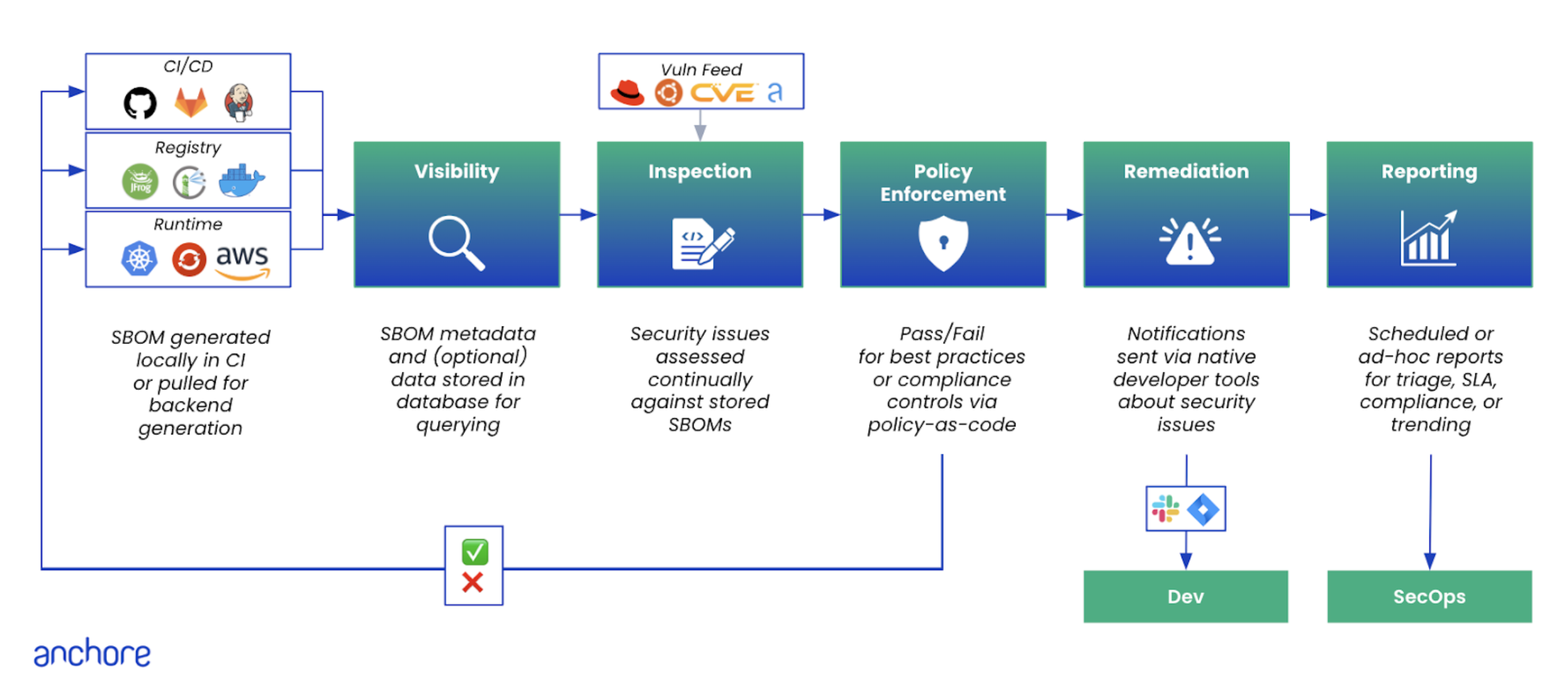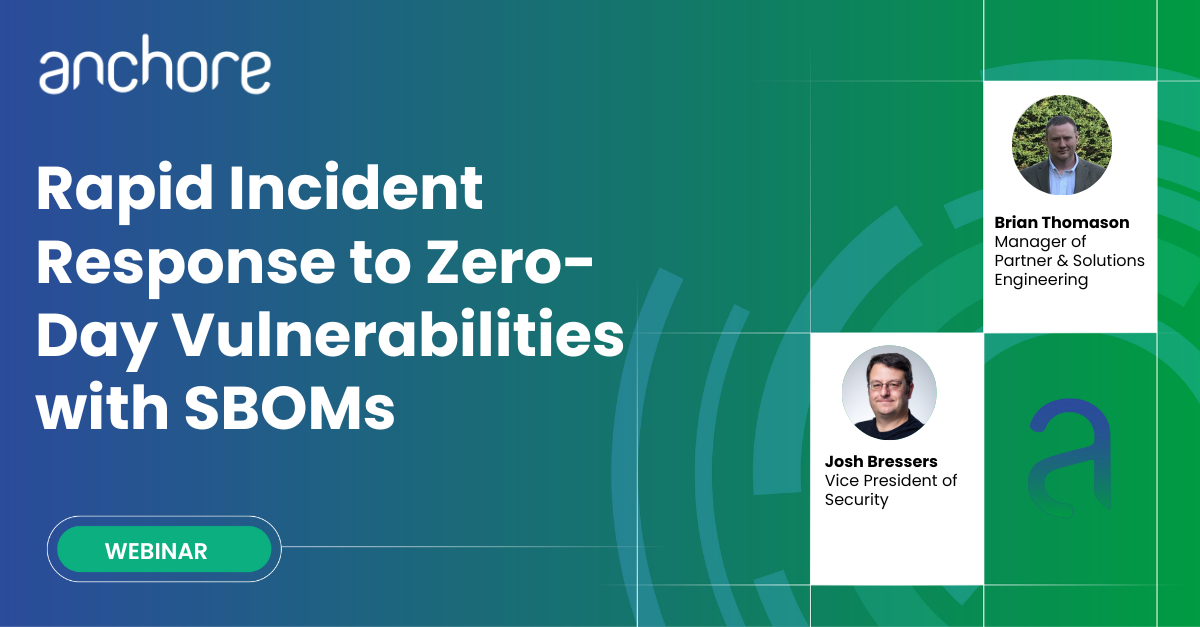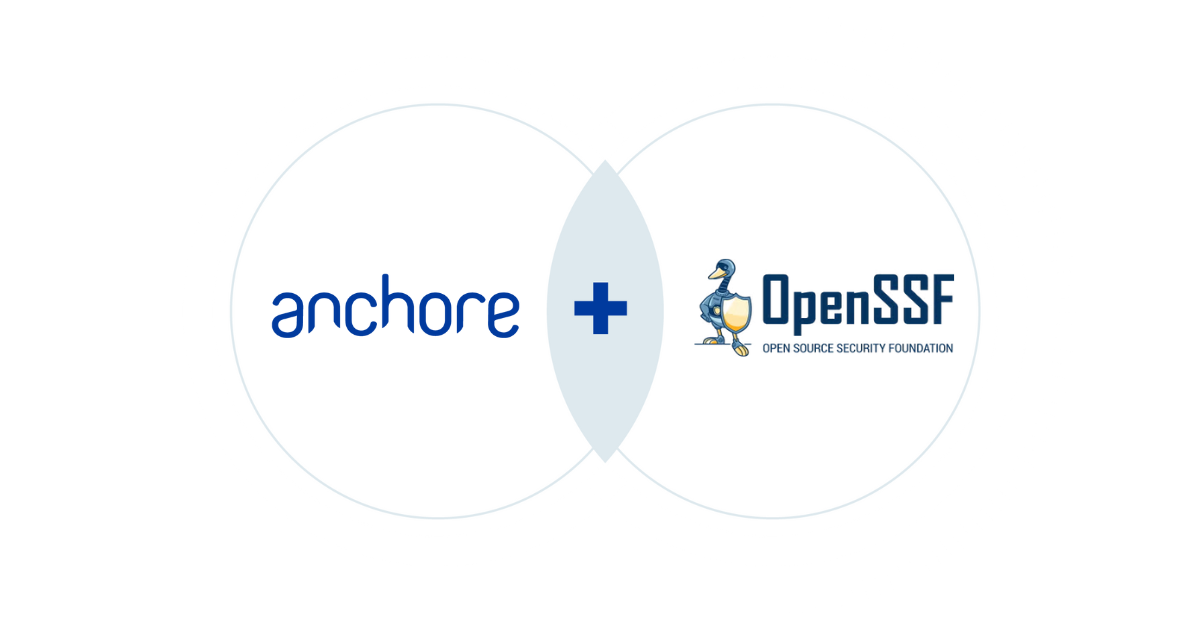Note: This is a multi-part series primer on the intersection of advanced persistent threats (APTs) and software supply chain security (SSCS). This blog post is the first in the series. We will update this blog post with links to the additional parts of the series as they are published.
• Part 1 | With Great Power Comes Great Responsibility: APTs & Software Supply Chain Security
• Part 2 | David and Goliath: the Intersection of APTs and Software Supply Chain Security
• Part 3 (This blog post)
Last week we dug into the details of why an organization’s software supply chain is a ripe target for well-resourced groups like APTs and the potential avenues that companies have to combat this threat. This week we’re going to highlight the Anchore Enterprise platform and how it provides a turnkey solution for combating threats to any software supply chain.
How Anchore Can Help
Anchore was founded on the belief that a security platform that delivers deep, granular insights into an organization’s software supply chain, covers the entire breadth of the SDLC and integrates automated feedback from the platform will create a holistic security posture to detect advanced threats and allow for human interaction to remediate security incidents. Anchore is trusted by Fortune 100 companies and the most exacting federal agencies across the globe because it has delivered on this promise.
The rest of the blog post will detail how Anchore Enterprise accomplishes this.
Depth: Automating Software Supply Chain Threat Detection
Having deeper visibility into an organization’s software supply chain is crucial for security purposes because it enables the identification and tracking of every component in the software’s construction. This comprehensive understanding helps in pinpointing vulnerabilities, understanding dependencies, and identifying potential security risks. It allows for more effective management of these risks by enabling targeted security measures and quicker response to potential threats. Essentially, deeper visibility equips an organization to better protect itself against complex cyber threats, including those that exploit obscure or overlooked aspects of the software supply chain.
Anchore Enterprise accomplishes this by generating a comprehensive software bill of materials (SBOM) for every piece of software (even down to the component/library/framework-level). It then compares this detailed ingredients list against vulnerability and active exploit databases to identify exactly where in the software supply chain there are security risks. These surgically precise insights can then be fed back to the original software developers, rolled-up into reports for the security team to better inform risk management or sent directly into an incident management workflow if the vulnerability is evaluated as severe enough to warrant an “all-hands on deck” response.
Developers shouldn’t have to worry about manually identifying threats and risks inside your software supply chain. Having deep insights into your software supply chain and being able to automate the detection and response is vital to creating a resilient and scalable solution to the risk of APTs.
Breadth: Continuous Monitoring in Every Step of Your Software Supply Chain
The breadth of instrumentation in the Software Development Lifecycle (SDLC) is crucial for securing the software supply chain because it ensures comprehensive security coverage across all stages of software development. This broad instrumentation facilitates early detection and mitigation of vulnerabilities, ensures consistent application of security policies, and allows for a more agile response to emerging threats. It provides a holistic view of the software’s security posture, enabling better risk management and enhancing the overall resilience of the software against cyber threats.
Powered by a 100% feature complete platform API, Anchore Enterprise integrates into your existing DevOps pipeline.
Anchore has been supporting the DoD in this effort since 2019. Commonly referred to as “overwatch” for the DoD’s software supply chain. Anchore Enterprise continuously monitors how risk is evolving based on the ingesting of tens of thousands of runtime containers, hundreds of source code repositories and alerting on malware-laced images submitted to the registry. Monitoring every stage of the DevOps pipeline, source to build to registry to deploy, to gain a holistic view of when and where threats enter the software development lifecycle.
Feedback: Alerting on Breaches or Critical Events in Your Software Supply Chain
Integrating feedback from your software supply chain and SDLC into your overall security program is important because it allows for real-time insights and continuous improvement in security practices. This integration ensures that lessons learned and vulnerabilities identified at any stage of the development or deployment process are quickly communicated and addressed. It enhances the ability to preemptively manage risks and adapt to new threats, thereby strengthening the overall security posture of the organization.
How would you know if something is wrong in a system? Create high-quality feedback loops, of course. If there is a fire in your house, you typically have a fire alarm. That is a great source of feedback. It’s loud and creates urgency. When you investigate to confirm the fire is legitimate and not a false alarm; you can see fire, you can feel fire.
Software supply chain breaches are more similar to carbon monoxide leaks. Silent, often undetected, and potentially lethal. If you don’t have anything in place to specifically alert for that kind of threat then you could pay severely.
Anchore Enterprise was designed specifically as both a set of sensors that can be deployed both deeply and broadly into your software supply chain AND a system of feedback that uses the sensors in your supply chain to detect and alert on potential threats that are silently emitting carbon monoxide in your warehouse.
Anchore Enterprise’s feedback mechanisms come in three flavors; automatic, recommendations and informational. Anchore Enterprise utilizes a policy engine to enable automatic action based on the feedback provided by the software supply chain sensors. If you want to make sure that no software is ever deployed into production (or any environment) with an exploitable version of Log4j the Anchore policy engine can review the security metadata created by the sensors for the existence of this software component and stop a deployment in progress before it ever becomes accessible to attackers.
Anchore Enterprise can also be configured to make recommendations and provide opinionated actions based on security signals. If a vulnerability is discovered in a software component but it isn’t considered urgent, Anchore Enterprise can instead provide a recommendation to the software developer to fix the vulnerability but still allow them to continue to test and deploy their software. This allows developers to become aware of security issues very early in the SDLC but also provide flexibility for them to fix the vulnerability based on their own prioritization.
Finally, Anchore Enterprise offers informational feedback that alerts developers, the security team or even the executive team to potential security risks but doesn’t offer a specific solution. These types of alerts can be integrated into any development, support or incident management systems the organization utilizes. Often these alerts are for high risk vulnerabilities that require deeper organizational analysis to determine the best course of action in order to remediate.
Conclusion
Due to the asymmetry between APTs and under-resourced security teams, the goal isn’t to create an impenetrable fortress that can never be breached. The goal is instead to follow security best practices and instead litter your SDLC with sensors and automated feedback mechanisms. APTs may have significantly more resources than your security team but they are still human and all humans make mistakes. By placing low-effort tripwires in as many locations as possible, you reverse the asymmetry of resources and instead allow the well-resourced adversary to become their own worst enemy. APTs are still software developers at the end of the day and no one writes bug-free code in the long run. By transforming your software supply chain into a minefield of best practices, you create a battlefield that requires your adversaries to slow down and carefully disable each individual security mechanism. None are impossible to disarm but each speed bump creates another opportunity for your adversary to make a mistake and reveal themselves. If the zero-trust architecture has taught us anything, it is that an impenetrable perimeter was never the best strategy.



